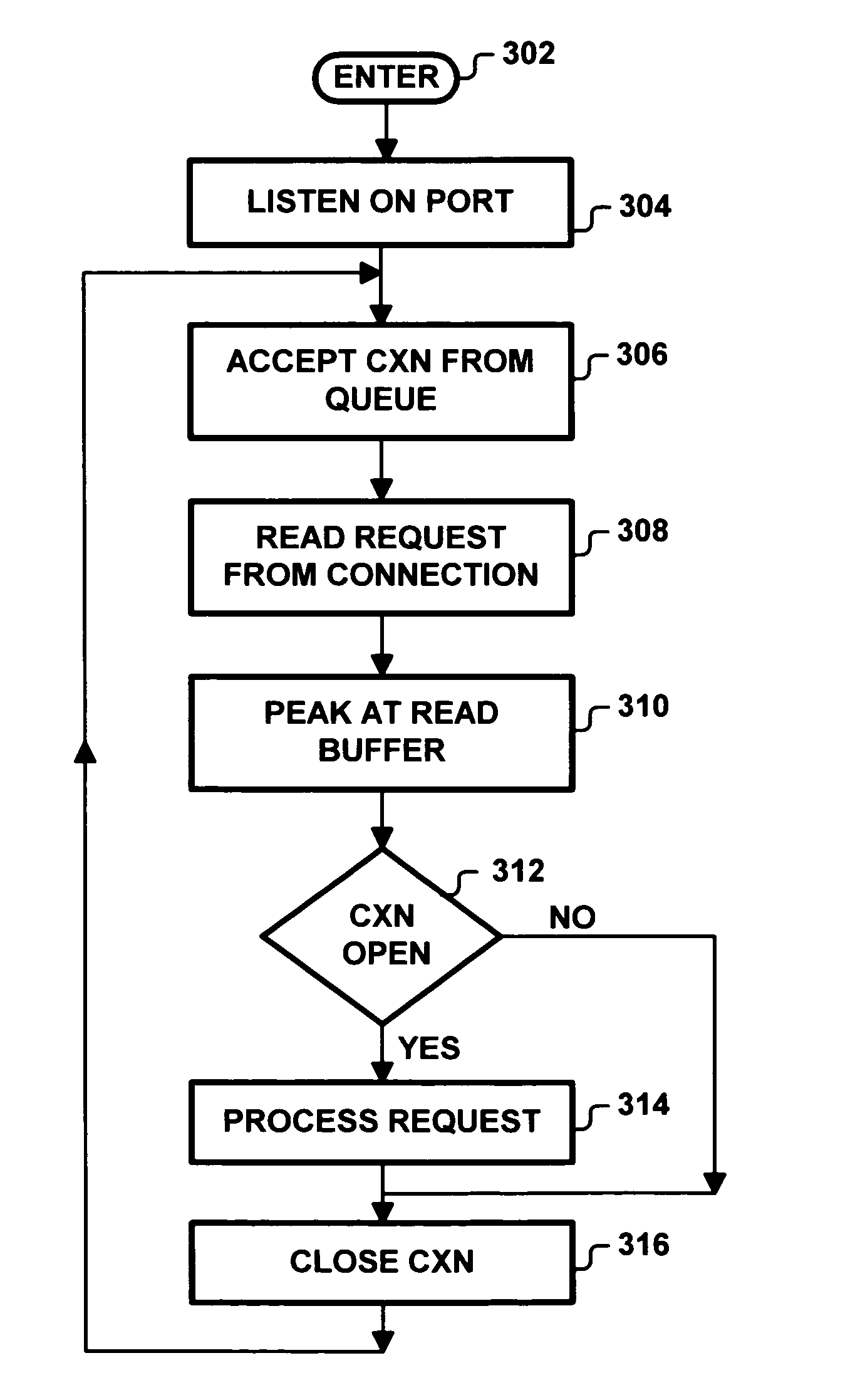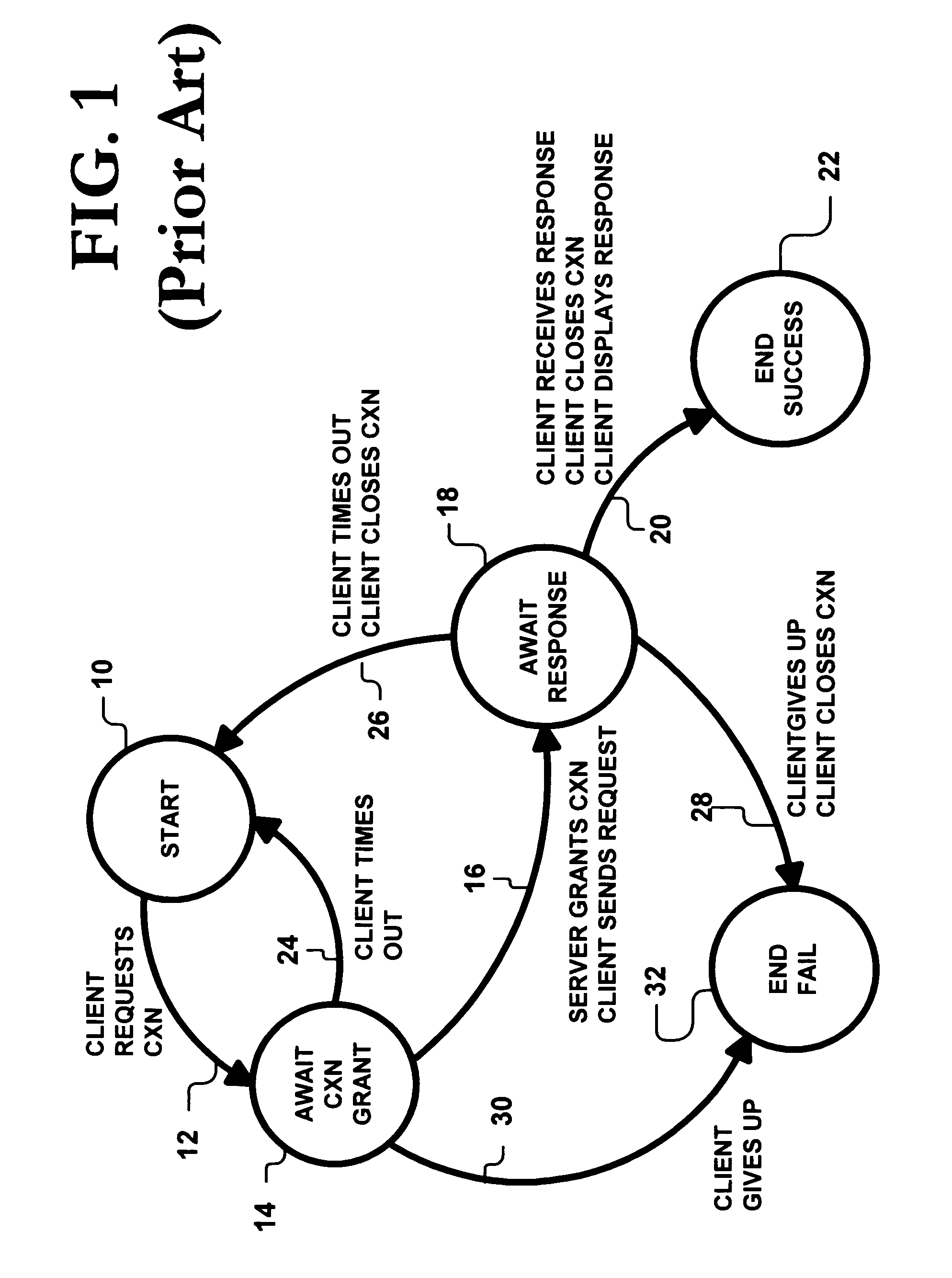System for aborting response to client request if detecting connection between client server is closed by examining local server information
a client server and server information technology, applied in the field of network servers, can solve the problems of large variance in request service times, user cancellation and possibly resubmission of requests, and substantial expenditure of server resources
- Summary
- Abstract
- Description
- Claims
- Application Information
AI Technical Summary
Problems solved by technology
Method used
Image
Examples
Embodiment Construction
[0019]As shown in the drawings for purposes of illustration, the present invention is embodied in a server that uses local server information to detect timed-out client requests. The server can detect timed-out client requests with little computational overhead. Therefore, the server can afford to check whether a response to a client's request is still needed before expending server resources on generating a response to that request. The amount of computational resources spent on processing dead requests is reduced and, consequently, server efficiency is increased. Moreover, protection against request-timeout livelock is provided.
[0020]Reference is made to FIG. 2, which shows a system 100 including a server 102 that is connected to a network 104 and a number of clients that are connectable to the network 104. The network 104 could be anything from a local area network to the Internet. Any type of network layer, data link layer and physical layer of the network 104 could be used. For...
PUM
 Login to View More
Login to View More Abstract
Description
Claims
Application Information
 Login to View More
Login to View More - R&D
- Intellectual Property
- Life Sciences
- Materials
- Tech Scout
- Unparalleled Data Quality
- Higher Quality Content
- 60% Fewer Hallucinations
Browse by: Latest US Patents, China's latest patents, Technical Efficacy Thesaurus, Application Domain, Technology Topic, Popular Technical Reports.
© 2025 PatSnap. All rights reserved.Legal|Privacy policy|Modern Slavery Act Transparency Statement|Sitemap|About US| Contact US: help@patsnap.com



